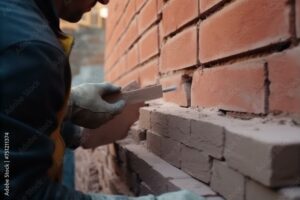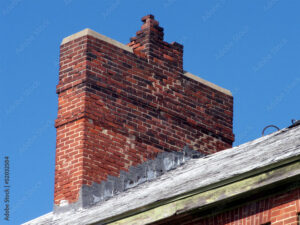When it comes to maintaining the structural integrity and aesthetic appeal of your brick home or investment property, masonry tuck pointing is a crucial process. However, some companies in this industry exploit homeowners and real estate investors by using dubious practices to inflate costs and deliver subpar results. By understanding these tactics, you can avoid falling victim to these scams and ensure your property receives the best care possible.
For Tons of Great Free Information please hit “Like & Subscribe”
Websiteconstructionconsumeradvocacyinstitute.com
Podcastanchor.fm/galloway
www.youtube.com/@ConstructionConsumerAdvocacy
What is Masonry Tuck Pointing? 
Masonry tuck pointing is the process of repairing and replacing the mortar joints between bricks or stone to maintain their stability and appearance. This technique involves removing damaged or deteriorated mortar and replacing it with new mortar that closely matches the original structure. When done correctly, tuck pointing can extend the lifespan of your masonry, prevent water damage, and improve your property’s overall look.
Common Scams and Rip-Off Tactics
Here are some common ways masonry tuck pointing companies can rip off customers:
1. Overcharging for Materials
One of the most prevalent scams involves companies overcharging for materials. Unscrupulous contractors may inflate the cost of mortar, tools, and other supplies, padding their invoices with unnecessary expenses. To avoid this, always ask for a detailed breakdown of material costs and compare prices from multiple suppliers before agreeing to any work.
2. Using Substandard Materials
Another way companies can cut corners is by using low-quality or inappropriate materials for the job. Inferior mortar can lead to premature deterioration, undermining the integrity of your brickwork and requiring costly repairs down the line. Ensure your contractor uses high-quality materials by researching the recommended products and asking for specific brands and types of mortar.
3. Incomplete or Shoddy Workmanship 
Some companies may rush through the tuck pointing process or employ unskilled laborers, resulting in poor workmanship. Signs of shoddy work include uneven mortar lines, gaps, and improper bonding between new and old mortar. To prevent this, request references and inspect previous projects completed by the contractor. Additionally, insist on a written contract specifying the scope of work and quality standards.
4. Unnecessary Repairs
Certain contractors may recommend unnecessary repairs to inflate costs. For example, they might suggest replacing entire sections of brickwork when only minor tuck pointing is needed. Get a second opinion from a trusted professional before agreeing to any extensive repairs. A reputable contractor will provide a thorough assessment and explain why specific repairs are necessary.
5. Hidden Fees and Charges
Some companies include hidden fees and charges in their contracts, such as travel expenses, disposal fees, or administrative costs. These additional costs can quickly add up, leaving you with a much higher bill than anticipated. Review all contracts carefully and ask for clarification on any ambiguous terms or charges before signing.
How to Avoid Being Ripped Off 
Protect yourself from masonry tuck pointing scams by following these tips:
1. Do Your Research
Start by researching local masonry tuck pointing companies. Look for reviews and ratings on websites like Yelp, Google, and Angie’s List. Ask for recommendations from friends, family, or colleagues who have had similar work done.
2. Get Multiple Quotes
Obtain quotes from at least three different contractors. Comparing prices and services will help you identify any outliers and give you a better understanding of the going rate for tuck pointing services in your area.
3. Check Credentials
Ensure the contractor is licensed, insured, and bonded. This protects you in case of accidents or damage during the project. Verify their credentials with your local licensing authority and ask for proof of insurance.
4. Ask for References
Request references from previous clients and follow up with them to gauge their satisfaction with the contractor’s work. Look for signs of professionalism, punctuality, and quality craftsmanship.
5. Insist on a Written Contract
A written contract should outline the scope of work, materials to be used, project timeline, and payment schedule. Review the contract carefully and ask for n on any terms you’re unsure about. Avoid contractors who refuse to provide a written agreement.
For Tons of Great Free Information please hit “Like & Subscribe”
Websiteconstructionconsumeradvocacyinstitute.com
Podcastanchor.fm/galloway
www.youtube.com/@ConstructionConsumerAdvocacy
6. Monitor the Work
Stay involved throughout the project by regularly checking on the progress and quality of work. Address any concerns with the contractor immediately to ensure they are resolved promptly.
Conclusion
Masonry tuck pointing is an essential maintenance task for preserving the integrity and appearance of your brick or stone property. By being aware of common rip-off tactics and taking steps to protect yourself, you can ensure you receive high-quality work at a fair price. Remember, a little due diligence goes a long way in safeguarding your investment.
If you have any questions or need further guidance, feel free to reach out to our team of experts. We’re here to help you make informed decisions and keep your property in top shape.

